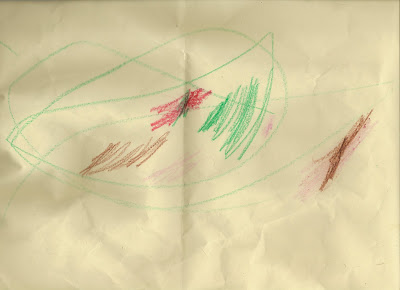Loved Jon Stewart's
declaration of war on Christmas the other night (12/6/12). Which got me thinking: where are the frontlines of this war? Where are the battlelines and trenches separating the atheists and secular liberals from the defenders of the sanctity of baby Jesus' birthday? Wouldn't it be great if we see the trebuchets loaded with tinsel bombs, nativity scenes secured with sandbags and machine guns...
Anyway, there are interesting spatio-temporal manifestations of these sorts of cultural phenomena. And now thanks to the internet (and that data behemoth, Google, in particular), we can actually see when and where something like the "War on Christmas" is taking place.
My buddy Robbie and I have been working with Google Insights for search for about six months now (he's been doing some interesting stuff on
his blog). The good folks at
Floating Sheep have been doing this sort of thing for a while now (using spatial data from the internet to comment on cultural phenomena), but the eight-hundred pound gorilla - search query data - has flown discretely under the radar. So now, back to the War on Christmas: The graph displays web search traffic relative to the importance of all search traffic during a given time period (it is
not a measure of the total volume of web traffic). So you can kind of think of it like, when there are spikes on the graph, searches for "war on christmas" make up a greater portion of total searches (it's sort of like a measure of relevance). There was a noticeable uptick in hostilities in the ongoing War on Christmas in December of 2005 - an event now immortalized as the "Family Tree Offensive." This escalation was the result of known soulless ghouls and Christmas war mongers Lowe's relabeling their synthetic, plastic, Chinese cat-traps from "Christmas Trees" to "Family Trees." This total diplomatic breakdown resulted in a media firestorm, which, predictably led to a whole bunch of people searching for "War on Christmas" on Google. These sorts of "media blips" ('consciousness earthquakes' as Rob termed them - I'm still wary about whether or not we can call this sort of knee-jerk reaction to media "conscious" behavior, but, hey, I'm splitting hairs now) in search data are incredibly important (queue map!) because this data also has a
spatial component. Media can track where their messages resonate the most, and following what types of coverage, and advertisers can use this data to target marketing to specific places. Our search behavior is being used to construct profiles of geographic locations, which are then used to determine what types of advertising we see, and potentially, what types of media we will consume. It's kind of a feedback loop, or dialectical process. So when we look at the map of the War on Christmas above, from the perspective of media and marketing, we can draw a couple of conclusions: 1) media coverage of the War on Christmas is affecting search behavior more in places like Colorado and Missouri than in other places (again, we aren't seeing total search volume on this map, but a measure of the likelihood that someone in each geographic location will use the search term 'war on christmas' that is normalized and scaled from 0-100); and 2) people in these places are going to be more interested in stories about the War on Christmas in the future (and Google has even predicted search trends out into the future as well).
So in this post I went from trebuchets and images of "We Three Kings" charging out on the battlefield in an up-armored Humvee ('Seriously, who brings
frankincense!'), to a totally dweeby analysis of search data and its implications for media and marketing. But theoretical rants aside, this is really interesting to me, because this is literally the most accurate measure we have of
where the War on Christmas is being fought. And if the media blip of 2005 is any indication, we can assume that many of the places highlighted on the map above have had some sort of local controversy (a local elementary school, for instance, doing a "Holiday" program that draws the ire of some pill-popping conservative radio host) that drives search data (lest we forget - this is a
huge and fairly representative dataset). Our behavior in cyberspace has real relationships with, and implications for, actual space.
With that, I bid you all a Merry Solstice...




